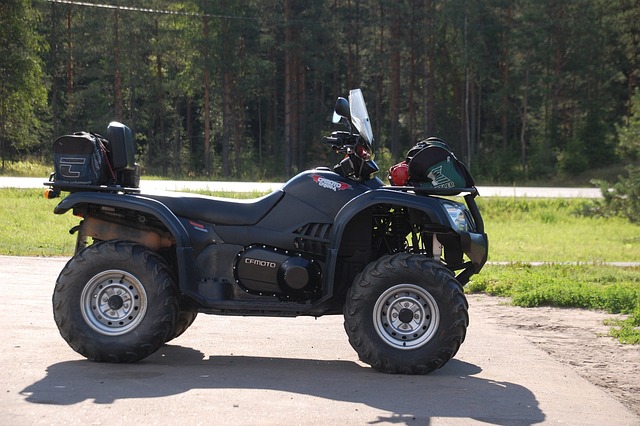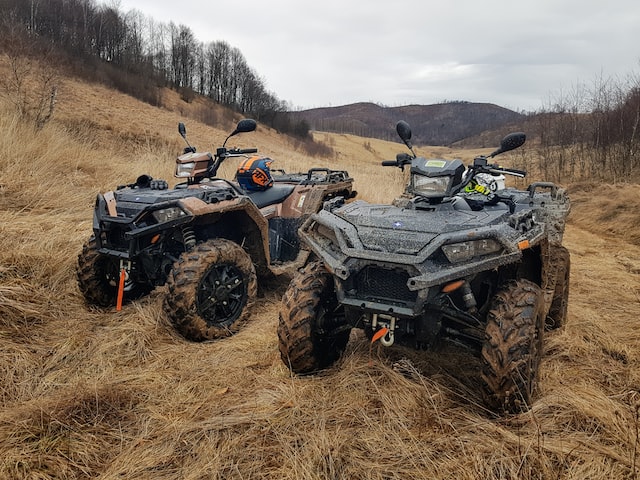Although ATVs and UTVs are enjoyable for racing on the trails, they are also valuable equipment for anybody who works on a ranch.
Farmers and ranch employees depend on utility vehicles for various tasks, including plowing fields and herding animals. In this article, we have compiled five factors to consider when purchasing an ATV or UTV for agricultural labor if you are in the market for a hard-working vehicle.
Read on to find out.
Tips to Consider Before Buying an ATV for Farm Usage

1. Engine Strength
The engine power of an ATV or UTV is in cubic centimeters, hp, or both, based on the model. In both instances, though, more significant numbers indicate more strength.
Other variables (such as torque and revolutions per minute) may affect the capability of a machine. However, a strong engine is a brilliant place to begin if you want to undertake difficult jobs.
You could do light field farming with 20-horsepower equipment. You will be capable of handling bigger implements more efficiently and with less effort on your machine if you increase the horsepower to 30.
2. Diesel, Gasoline, or Electric?
Most ATVs and UTVs operate on gasoline. However, some variants have diesel engines, while others are electrically powered.
In general, diesel-powered machines are robust and sturdy, built to move massive loads and manage equipment and attachments. You may not experience the same velocity and sports performance as a gasoline-powered vehicle. However, this is often fine for farmers.
Unlike diesel and gasoline engines, electric versions provide various benefits, including less noise and upkeep. Electric ATVs do not have oil filters, fuel filters, air filters, or spark plugs. It is enticing, correct?
However, intensive agricultural activity may rapidly deplete the batteries. And if you run out during a job, recharging is quicker and handier than refueling with diesel or gasoline.
3. Two-Wheel Drive or Four-Wheel Drive?

Most ATVs and UTVs have four-wheel drive, but most racing, sport, and youth quads are 2WD. When picking which off-road vehicle to purchase, you must consider how to use the ATV and the terrain you will be riding on.
4WD vehicles are often more durable, heavier, and more stable. With 4WD, traveling up and down slopes and over obstructions is more manageable. Additionally, you have improved traction in muddy or snowy terrain.
2WD vehicles are often lighter and less costly. With a 2WD ATV, you can execute tighter turns and handle more effectively in confined situations. Having a car with two-wheel drive might be advantageous while tagging young, active calves.
Most new 4WD ATVs include a button that allows you to switch between 2WD and 4WD, depending on the surface you’re traveling on if you genuinely don’t know between the two.
4. Chain or Shaft Transmission?
What mechanism does the gearbox distribute power to the wheels? Many tiny ATVs have chain drives, which have a chain (similar to a bicycle) to do the task.
They are lightweight and less costly than shaft drives, which transfer power via shafts and joints. However, chain drives need more significant maintenance. In addition, they are less robust than shaft drives, which are ideal for heavy-duty agricultural labor.
5. How Much Can It Tow?

Occasionally, it would help if you hauled more than your ATV can accommodate. Attaching a yard cart or utility trailer and transporting a more significant load is convenient when this occurs.
Check towing capacity before buying a vehicle if you want to undertake a great deal of heavy-duty towing. A tiny ATV may be rated to carry at most 500 pounds, including the trailer’s weight. A more robust ATV can support 2,000 pounds or more.
6. Cargo Capacity
Whether you are transporting feeding bags or hundreds of pounds of goods, you must ensure that the weight capacity of your farm-work vehicle is sufficient.
While considering the towing capability, consider the cargo capacity as well. There are weight restrictions on how much an ATV’s cargo carrier can carry between the front and back racks.
Many ATVs can carry up to 600 pounds. Extending the weight above the load limit might increase the danger of overturning, particularly on uneven terrain or slopes.
What Are the Benefits of an ATV?
ATVs are ideal for competition and trail riding since they are more maneuverable and smaller. ATVs are comparable to four-wheeled dirt bikes and are standard power sports vehicles. ATV trail riding is ideal for individuals who want to experience outdoors and power sports.
Is Atvs High Maintenance?

These vehicles need as much maintenance as a standard automobile, if not more. Considering all the adverse settings and arduous travels they endure, it is easy to see why. The most significant error in ATV maintenance is just failing to do it.
Final Takeaway
Whether your farm requires an ATV or an SxS, both off-road vehicles will make many daily tasks easier. These vehicles are vital for traversing extended distances, gaining access to inaccessible places, delivering feed, equipment, and personnel, and pulling and towing large cargo.
With a limitless selection of attachments to tailor your vehicle to your precise agricultural demands, it will become your most reliable contemporary farming buddy.














